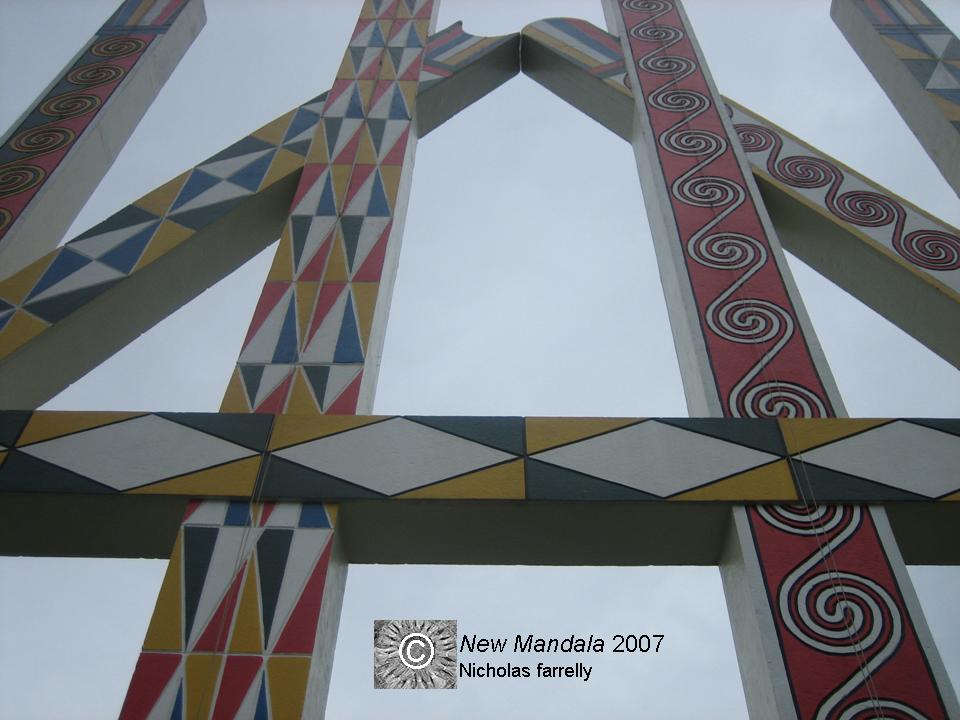Prompted by discussion here on New Mandala, Oxford University’s Dr Mandy Sadan has very generously provided an extract from her 2005 School of Oriental and African Studies doctoral thesis that will be of interest to many readers.
The background to this extract is:
The manau festival as it is commonly presented today in the Burmese state is a one-day, secular, community dance performed around a set of painted wooden posts in a dancing circle. This kind of one-day festival, most commonly represented by the government-sponsored festival held each year on Kachin State Day in January, has become the pre-eminent symbol of the Kachin peoples of Burma and the manau posts, or manau shadung, have become their emblem. However, in December 2001 a large, eight-day long, locally initiated, non-state sponsored event, challenged this conventional contemporary representation, but the underlying notion that it is a secular community festival principally performed around a set of decorated posts still holds true.
The full extract (which runs to 37 pages) is available here. Readers are, as always, very welcome to post their comments and questions. Previous New Mandala discussion of Manau festivals is also available online.
 Facebook
Facebook  Twitter
Twitter  Soundcloud
Soundcloud  Youtube
Youtube  Rss
Rss 